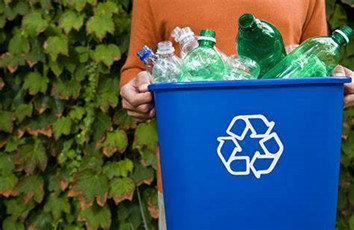TED | 消灭铺张浪费
演讲简介
安德鲁 · 登特认为,没有什么东西是应该扔掉的——当你将用过的食品容器、玩坏的玩具或者旧袜子扔进垃圾桶时,它们最终将不可避免地被运到垃圾场。但我们可以改进产品的生产和再生产方式。登特分享了关于节俭的几个例子,如利用和重新利用你需要的东西而不总是买新的,材料科学的进步——如用纳米纤维制作的电子产品,以及用酶让塑料变得可无限循环利用。

演讲精彩片段(节选)欣赏
Nature also is very effective at thrift. Think about it: nature has zero waste. Everything is useful for another process. So, in this case, nanocellulose, which is basically one of the very fine building blocks of cellulose, which is one of the materials that makes trees strong, you can isolate it, and it works very much like carbon fiber.
大自然在节约方面也是极其高效的,想一想:大自然不会生产任何垃圾,每一样东西都能物尽其用。例如,纳米纤维,它是纤维素极细微的组成部分,纤维素是能让树木如此坚固的物质之一,你可以对它进行分离,它的性质跟碳纤维非常相似。
So, take that from a tree, form it into fibers, and then those fibers can strengthen things, such as airplanes, buildings, cars. The advantage of this, though, is it’s not just bioderived, comes from a renewable resource, but also that it is transparent, so it can be used in consumer electronics, as well as food packaging. Not bad for something that basically comes from the backyard.
从树木中提取纤维素,接着再制成纤维,然后这些纤维能用来加固东西,例如飞机、建筑物、汽车。这一做法的优点是,纳米纤维不仅仅来自于可再生的生物资源,同时它还是透明的,因此可以应用在消费电子产品和食品包装上。这种再利用还不错吧!
Another one from the biosource is synthetic spider silk. Now, it’s very hard to actually create spider silk naturally. You can basically get it from spiders, but in large numbers, they tend to kill each other, eat each other, so you've got a problem with creating it, in the same way you do with regular silk.
另一种来自生物界的材料是合成蜘蛛丝。用天然的方法制造蜘蛛丝是很难的,你只能从蜘蛛获得蜘蛛丝,但蜘蛛数量多了,它们会自相残杀、互相蚕食,所以如果你像收集蚕丝那样去收集蜘蛛丝的话,就会遇到问题。
So what you can do is instead take the DNA from the spider, and put it into various different things. You can put it into bacteria, you can put it into yeast, you can put it into milk. And what you can do then is, the milk or the bacteria produce in much larger volumes and then from that, spin a yarn and then create a fabric or a rope.
那么,你可以做的就是从蜘蛛中提取 DNA,并将它放到不同的地方培养。你可以把它放到细菌里,放到酵母里,放到牛奶里。之后,你能做的是,当牛奶或细菌产生大量的丝状物后,提取出来纺纱,接着制作织物或绳子。
Again, bioderived, has incredible strength - about the same as Kevlar - so they’re using it in things like bulletproof vests and helmets and outdoor jackets. It has a great performance.
它来源于生物,有着惊人的强度——大约和芳纶纤维一样强,因此可以用来制作防弹背心和头盔,以及户外夹克,性能十分出众。
But again, it’s bioderived, and at the end of its life, it potentially can go back into the soil and get composted to again be potentially used as a new material.
但别忘了,这是生物衍生物,当它不再有使用价值时,就可以变成土地里的肥料,作为一种新的东西重新被利用。
I'd like to leave you with one last form which is biobased, but this, I think, is like the ultimate thrift. Think about the poster child for conspicuous consumption. It’s the water bottle.
最后,我还想给你们介绍一种基于生物的产品,而我觉得,这才是终极的节俭。想想挥霍式消费的典型代表,那就是矿泉水瓶。
We have too many of them, they’re basically going everywhere, they’re a problem in the ocean. What do we do with them? This process is able not just to recycle them, but to recycle them infinitely.
我们有非常多的这样的水瓶,它们无处不在,是海洋污染重要来源之一。 那我们能做些什么呢?我们不仅应该让水瓶可以回收再利用,而且应该让这个过程无限进行下去。
Why is that interesting? Because when we think about reusing and recycling, metals, glass, things like that, can be recycled as many times as you like. There’s metal in your car that may well have come from a 1950s Oldsmobile, because you can recycle it infinitely with no loss of performance.
为什么这点很有意思呢?因为像那些能重复利用和回收再利用的东西,比如金属、玻璃等等,都能被回收再利用很多次。比如你的汽车的金属配件,可能来自19世纪50年代的奥尔兹莫比尔汽车。因为你可以无限地回收这些金属,没有一点损耗。
Plastics offer about once or twice of recycling, whether it’s a bottle, whether it’s a chair - whatever it is, if it’s carpet - after two times of recycling, whether it goes back into another chair, etc, it tends to lose strength, it’s no longer of any use. This, though, just using a few enzymes, is able to recycle it infinitely.
而塑料只能被回收再利用一到两次,不管是塑料水瓶,还是塑料椅子——不论是什么,还比如地毯——如果它被回收过两次后,不论被用来制作椅子还是其他东西,它的强度都会降低,不能再被用来制作任何东西了。然而我们可以利用酶,让塑料可以无限回收再利用。


